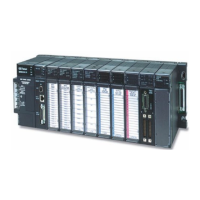GFK-1322A Chapter 1 Overview 1-3
1
L
ON
W
ORKS
Network Overview
A control network consists of intelligent control devices, called nodes, that communicate using a
common protocol. Each node in the network contains embedded intelligence that implements the
protocol and performs control functions. In addition, each node includes a physical interface that
couples the node’s microcontroller with the communications medium.
In a L
ON
W
ORKS
network, the nodes communicate over one or more media such as twisted wire
pair, power line, fiber optic cable, coaxial cable, RF, or infrared. At the heart of each node is the
Neuron
®
chip which contains the L
ON
T
ALK
protocol, a complete seven-layer communications
protocol that ensures that nodes can interoperate using an efficient and reliable communications
standard. Because Neuron chips can be connected directly to the sensors and outputs that they
supervise, a single Neuron chip will process sensor/output status, execute control algorithms, and
communicate with other Neuron chips.
The L
ON
T
ALK
protocol uses I/O points, known as
network variables
, to allow devices from
different manufacturers to communicate with each other. Echelon’s
Standard Network Variable
Types
(SNVTs) provide standard units of measurement for common control quantities, such as
pressure, temperature, and volume. The LBIM supports SNVTs that are less than 32 bytes in
length, and are defined in
The SNVT Master List and Programmers Guide
(005-0027-01).
The LBIM contains a transceiver that provides a physical communication interface between the
module’s Neuron chip and a L
ON
W
ORKS
network. The LBIM supports bus and loop topologies,
based on the TP/XF-T78 and TP/XF-1250 transceivers, and free topology, based on the TP/FT-10
transceiver. The free topology allows more options for network design. Table 1-2 lists the
topologies supported by each type of LBIM. Figure 1-2 illustrates the supported topologies.
Table 1-2.
Supported Topologies
Catalog No. Transceiver Topology Network Characteristics
PE693BEM350
TP/FT-10 Free
(Bus, Star, Loop,
Others, Combinations)
Bit Rate: 78Kbps
Distance: 500m free topology, 2,700m with doubly
terminated bus. Distance can be multiplied with
repeaters.
No. of Nodes: up to 64
Other: Transformer-isolated; high impedance when
unpowered
PE693BEM351
TP/XF-78 Bus/Loop Bit Rate: 1.25Mbps
Distance: 500m (0.3m stubs)
No. of Nodes: up to 64
Other: Transformer-isolated
PE693BEM352
TP/XF-1250 Bus/Loop Bit Rate: 78Kbps
Distance: 2000m (3m stubs)
No. of Nodes: up to 64
Other: Transformer-isolated

